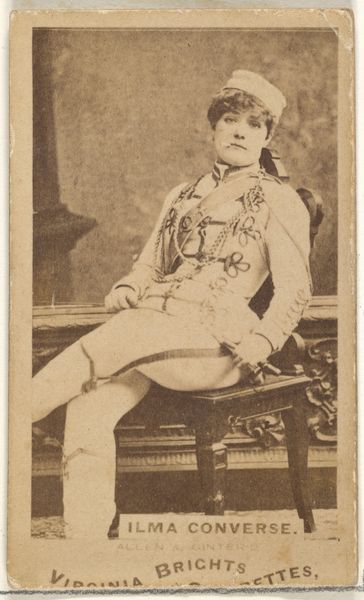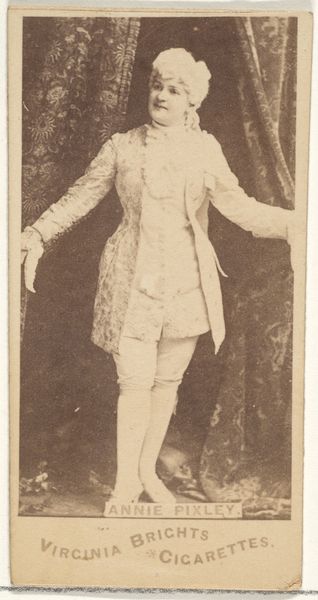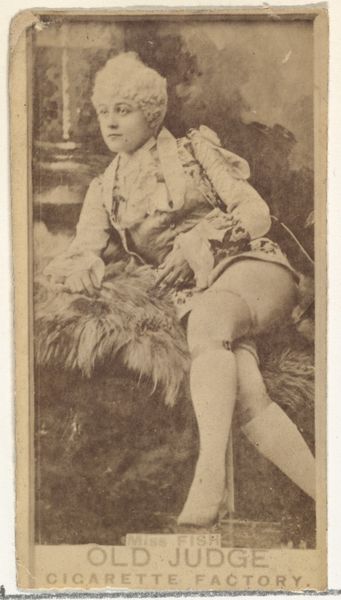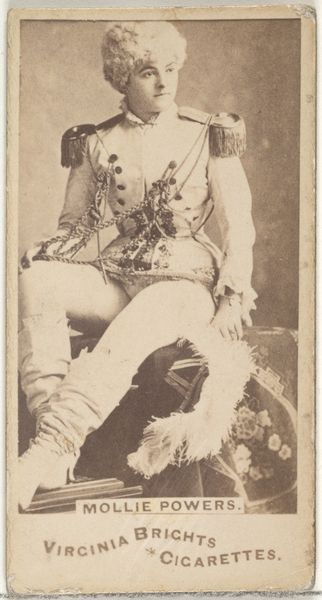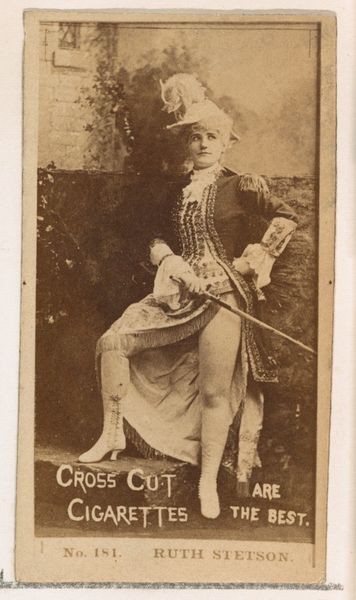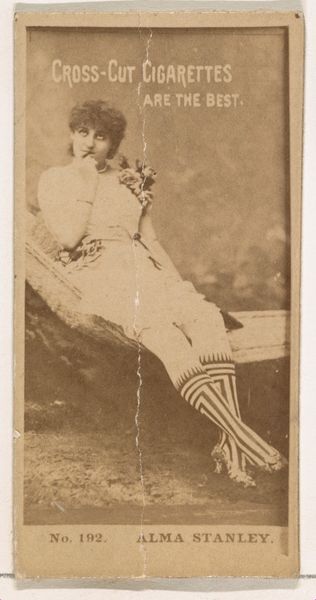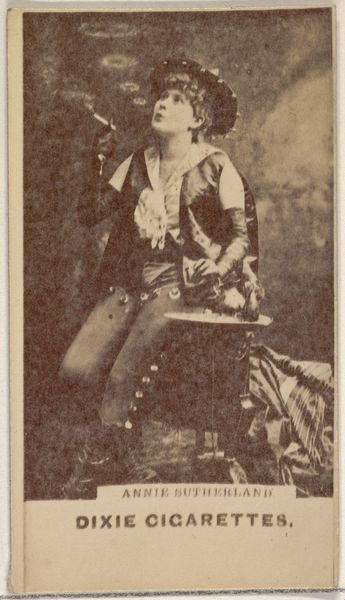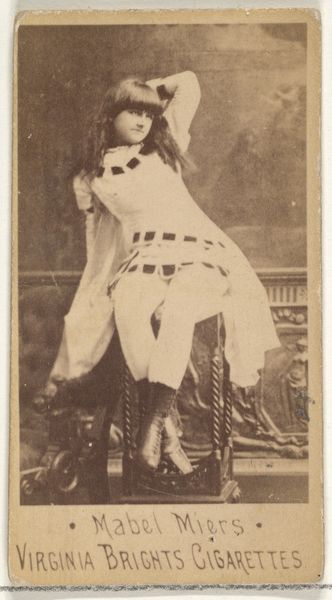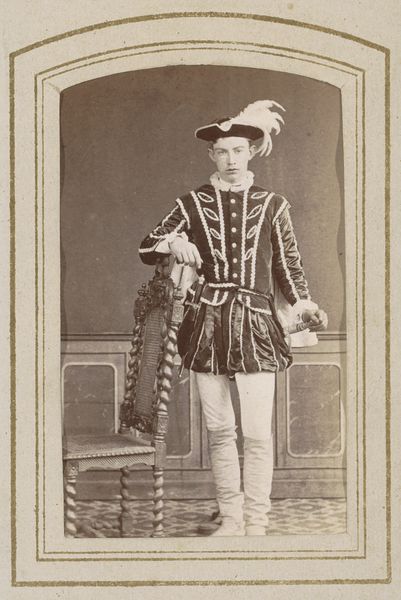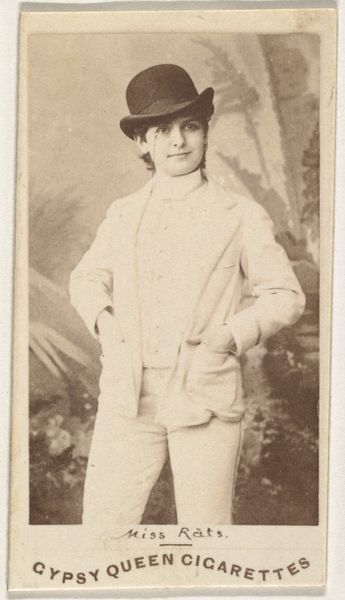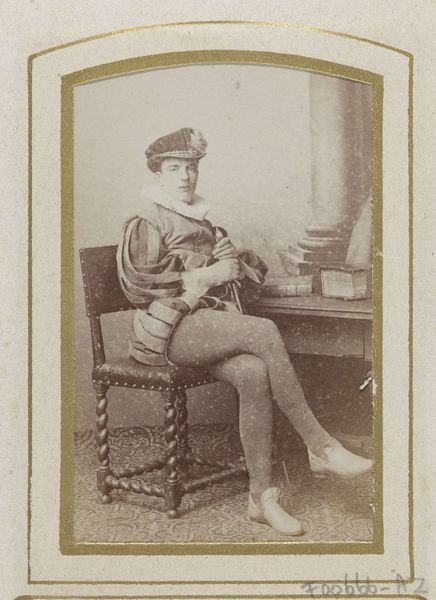
Ida Bell, from the Actors and Actresses series (N171) for Old Judge Cigarettes 1886 - 1890
0:00
0:00
print, photography
#
portrait
# print
#
photography
Dimensions: sheet: 2 11/16 x 1 3/8 in. (6.9 x 3.5 cm)
Copyright: Public Domain
Editor: Here we have a rather intriguing collectible card from between 1886 and 1890. It's titled "Ida Bell, from the Actors and Actresses series" and was created by Goodwin & Company for Old Judge Cigarettes, using photography and etching techniques to produce the print. I'm fascinated by how this seemingly delicate image served such a commercial purpose. What stands out to you when you look at this piece? Curator: As a materialist, my eye is drawn to the layers of production at play here. It begins with the photograph itself, a product of specific chemical and optical technologies. Then it's transferred through the etching process for mass production and printed on cardstock, meant for distribution with cigarettes. Each stage involves labor, resources, and a market intended for popular consumption. The very concept blurs the boundaries between 'high art' and everyday ephemera. Editor: That’s interesting. So, the means of production and its connection to a product like cigarettes is as important as the image of Ida Bell herself? Curator: Precisely. The image isn't simply a portrait; it's a commodity, circulating within a specific economic and social context. Who was Ida Bell, really? Was her image used with consent? What were the labor conditions in factories producing these cards and cigarettes? These questions challenge a romantic view of art, revealing the tangible forces behind its creation and dissemination. Note also the slight influence of Japonisme; the cigarette cards’ dimensions mirrored the format of Japanese *ukiyo-e* prints, cheap to produce in multiple impressions using newly developed printing processes and images suitable for framing or collection by enthusiasts. Editor: It is so thought-provoking to think about these elements of mass production and labor related to a portrait. Thanks for providing that point of view. I am taking it all in. Curator: Indeed. Considering the material history pushes us to understand art not as isolated aesthetic objects, but as interconnected parts of larger economic and social networks.
Comments
No comments
Be the first to comment and join the conversation on the ultimate creative platform.
